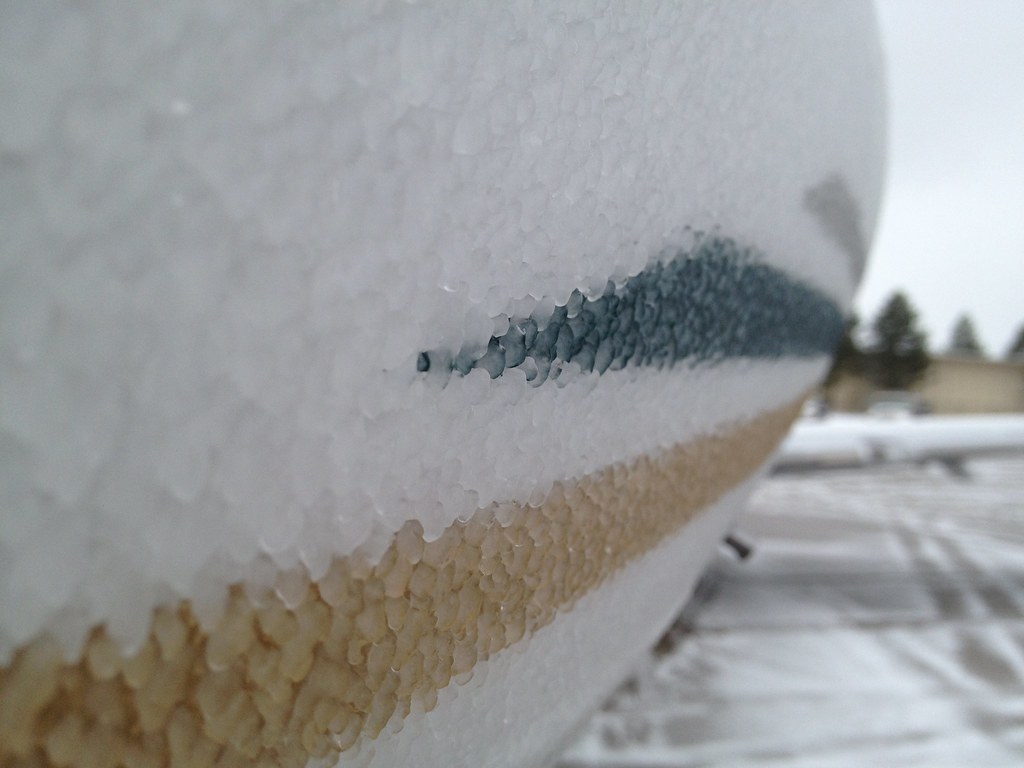gotWXdagain
Polished Member
Not sure how well it could have been seen from the tower.
True, storms and proximity to the runway are an issue.
Not sure how well it could have been seen from the tower.
Cosign. I landed around that time as well, and it was bad enough that the icing was the worst I've ever encountered.B: As someone who landed right around the time of this incident, the visibility sucked. RVR for 35R was around 3500/4000, 1/2SM vis and the ceiling was at 300'. I doubt the tower saw a thing.
Cosign. I landed around that time as well, and it was bad enough that the icing was the worst I've ever encountered.
I agree. I've never had that much ice build up and stay there on the airplane in over 7 years of me flying it.
Cosign. I landed around that time as well, and it was bad enough that the icing was the worst I've ever encountered.
I agree. I've never had that much ice build up and stay there on the airplane in over 7 years of me flying it.

You weren't kidding around. I had a bit more ice then usual coming out the night before but man...I landed in the time frame over at KAPA, it was the worst icing I've seen in years. Usually we might get a little trace around 8" wide at the very tip of the nose, that day I looked more like this-
Going back several feet off the nose, some surfaces had 3.5" built up. Those guys did great job, it sucked enough dealing with the just dealing with the weather.
Austin thanks for some good health info. I have often wondered about oil injected into the packs. Makes me worry. Also that Eagle RJ above, wow that is a ton of ice. I would think that would be borderline severe?
He used the magic word, emergency. Actually, I thought what he said was exceedingly clear, emergency, smoke, roll trucks. The controller didn't mis-hear his words, he just didn't think it was real. I don't care if he said something as non-standard as "Fifty-nine twelve is on fire, we're landing, roll trucks," the controller can interpret and declare the emergency, and should default to "this is real" not "this is BS."
Bleed air is typically 600 degrees or hotter. Common jet engine oils contain trycresyl phosphate (TCP), which is a neurotoxin. The flight crew can be intoxicated by the fumes, and their cognitive function, and motor coordination seriously degraded. That could have influenced the pilots' non-standard communications in this instance, together with the low viz, situational stress, etc.
It appears the controller only heard "12", not "5912", if you read the article. So I can see where controller confusion came from. The other comments likely came from his being pretty busy, working local with other aircraft in low WX, and not time to decipher an emergency attached to a callsign he didn't immediately recognize.
Perhaps, but why didn't the controller act anyway? He seemed to have immediately assumed it was fake instead of at least asking for clarity on the frequency. Other pilots may have heard better. Who knows.
I believe they mistook the "59" as being "United". Hence them saying "United 12".
They could have at least sent an airport truck out, instead it was completely dismissed. Since they couldn't see the whole airport I can't believe they would assume something was fake until they had some sort of verification. They could have had an even larger incident had they let United land right behind them as a result.
Indeed. I'm more surprised that a crew member of another aircraft didn't say something.it probably just became one of those things that happen in busy situations where comms drop off.
Indeed. I'm more surprised that a crew member of another aircraft didn't say something.
I just can't help but think of this incident where an assumption during low vis operations was almost deadly.Unless they were busy in IMC in their own cockpit, say on the approach or so, and the transmission was so clipped (due to workload too), that its one of those "Did you hear that? Someone say emergency? Who was that?"; along with not wanting to jam up ATCs freq by talking on it when the controller may need to. Again, best I can think.
I just can't help but think of this incident where an assumption during low vis operations was almost deadly.
